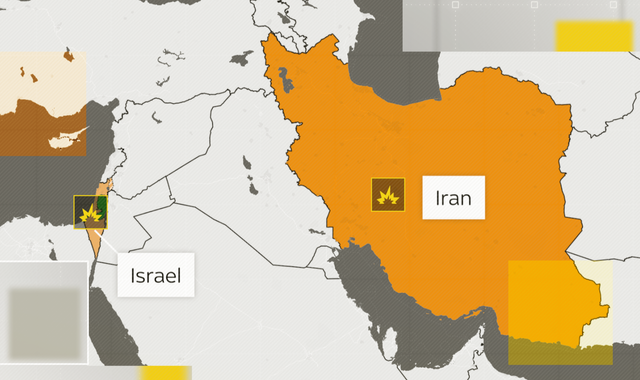
Israel and Iran exchanged aerial bombardments after Israel's surprise attack in the early hours of 13 June - before both countries announced on Tuesday they had agreed to a ceasefire.
Thousands of missiles have been sent by each side, and the US also supported Israel in using bombers to strike Iran's main nuclear sites.
This map shows the strikes in Iran, broken down by the type of attack. You can zoom in and click on individual points to see more detail, or click on parts of the key to focus in on specific types of targets.
We will be keeping these maps updated each day, with the latest developments in the conflict.
And here's a close-up on the capital Tehran. The close proximity of key targets there means it has been the most heavily hit part of the country.
Israel's sophisticated air defence system - consisting of the Iron Dome, David's Sling, Arrow System and American-made Patriot System, each of which respond to different sorts of missile, rocket and drone attacks - mean that most of the attacks on the country have been intercepted without causing any damage.
Nonetheless, Iran struck several targets in Israel, including many in and around Tel Aviv.
America joined in the attacks on Iran on 22 June (or 21 June US time), using B2 bombers to drop several Massive Ordnance Penetrator "bunker busters" on Iran's key nuclear enrichment facilities.
The bombs are about as long as a transit van, and weigh about as much as a standard five-door car. They were thought to be the only weapons on the planet capable of penetrating the Iranian sites which were buried deep underground.
Donald Trump said the attacks had "completely and totally obliterated" the facilities.
These satellite images show the impact of the attacks.
However, leaks from the US Defence Department suggest the bunker busting bombs dropped on Iran's three nuclear enrichment sites might only have set the country's nuclear capabilities back by months.
"This is a very well-developed, long-standing programme with a lot of latent expertise in the country," said Darya Dolzikova, a proliferation and nuclear security expert at RUSI, a UK defence and security thinktank.
"I don't think we're talking about a full elimination at this point, certainly not by military means."
The ceasefire agreed between Israel and Iran on the morning of 24 June appears to be holding for now, despite a shaky start.
The Sky News Data and Forensics team will continue to follow the story. Follow other developments live here.
The Data and Forensics team is a multi-skilled unit dedicated to providing transparent journalism from Sky News. We gather, analyse and visualise data to tell data-driven stories. We combine traditional reporting skills with advanced analysis of satellite images, social media and other open source information. Through multimedia storytelling we aim to better explain the world while also showing how our journalism is done.

(c) Sky News 2025: Israel-Iran conflict: Maps tracking the strikes in each country

 Leaks plunge success of 'Operation Midnight Hammer' into serious doubt
Leaks plunge success of 'Operation Midnight Hammer' into serious doubt
 NATO chief refers to Trump as 'daddy' as he praises US president over Israel-Iran ceasefire
NATO chief refers to Trump as 'daddy' as he praises US president over Israel-Iran ceasefire
 NATO allies agree 'ironclad commitment' to collective defence - but no condemnation of Russia's war in Ukraine
NATO allies agree 'ironclad commitment' to collective defence - but no condemnation of Russia's war in Ukraine
 Article 5: How NATO's collective defence clause works - and the one time it has been invoked
Article 5: How NATO's collective defence clause works - and the one time it has been invoked
 Thousands of Eurostar passengers facing cancellations and severe delays after cable theft
Thousands of Eurostar passengers facing cancellations and severe delays after cable theft
 Why did the US attack on Iran avoid some nuclear sites?
Why did the US attack on Iran avoid some nuclear sites?
 Man dies after being struck by lightning on honeymoon in Florida
Man dies after being struck by lightning on honeymoon in Florida
 Peter Falconio: Australian police offer $500k reward for information leading to discovery of British backpacker's remains
Peter Falconio: Australian police offer $500k reward for information leading to discovery of British backpacker's remains
 Zohran Mamdani wins New York City's Democratic mayoral primary in shock victory for socialist candidate over Andrew Cuomo
Zohran Mamdani wins New York City's Democratic mayoral primary in shock victory for socialist candidate over Andrew Cuomo




